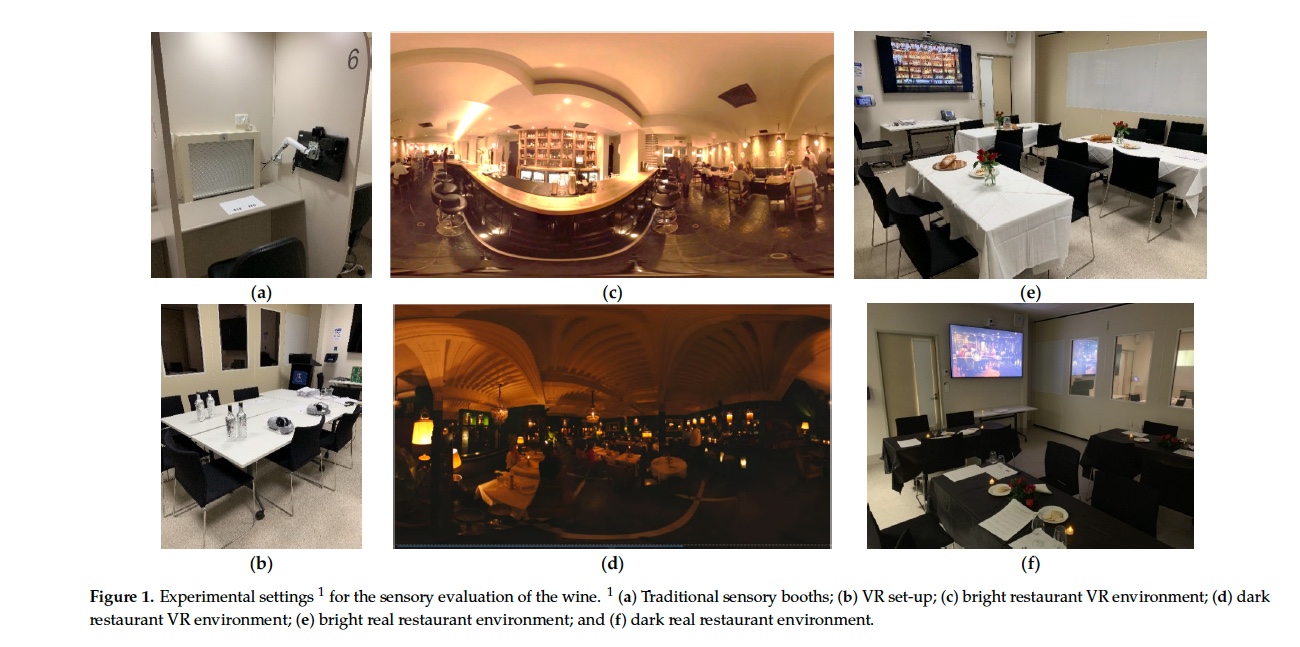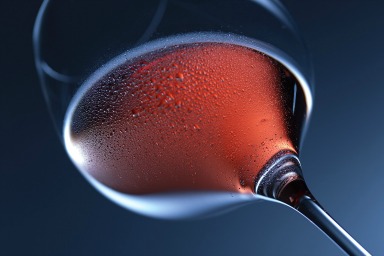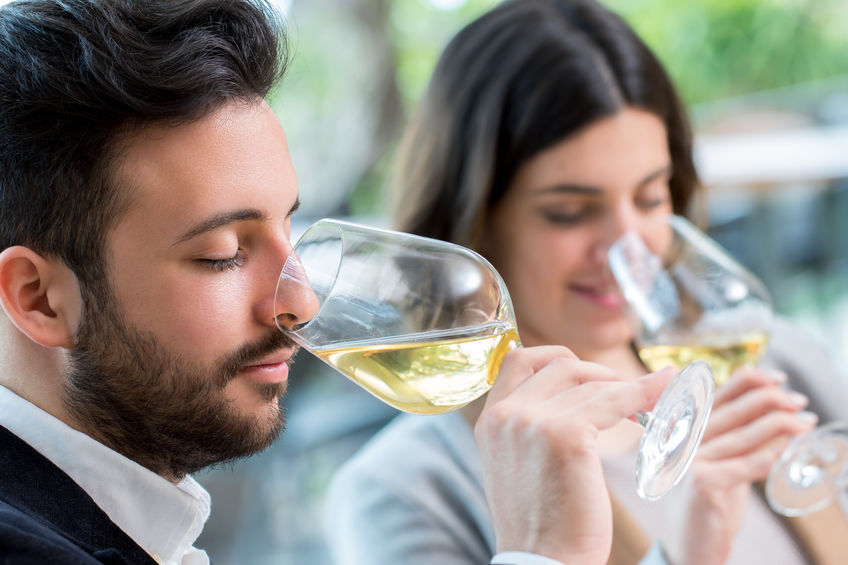Does our wine experience change with our surroundings?
We all have memories of a remarkable wine experience; however, when we try to share the wine and re-create this experience, it usually doesn't work. It happened to me not so long ago.

My hubby and I were touring one of my favorite Champagne houses, Mumm in Reims. Our tour guide took us to a private tasting room where she offered us to taste the Fujita cuvée, a unique Champagne rosé. The painter Fujita, who was the artist in residence for many years, was the inspiration for this particular cuvée. It was one of a kind wine experience.
We felt privileged and fortunate to have the chance to taste the wine in a comfortable and quiet space, and just the two of us. Quite memorable!
We brought a bottle of the same wine to our friends for Thanksgiving dinner. We opened the bottle in the kitchen while dinner was on the way. The wine seemed flat in both carbonation and flavor.
Of course, there is variation from bottle to bottle; and the long flight might have impacted the wine. Maybe the magic of being at the winery made us appreciate the wine more than we would have in a different context.
What happened?
How the tasting environment can change a wine experience?
Our wine experience can change with our surroundings. This topic has been a subject of research for several years now. Scientists acknowledge the value of sensory evaluation for quality assurance or for understanding the impact of viticulture practices or winemaking processes on wine quality. However, these scientific methods are far from the wine experience consumers have in the real world. Nonetheless, sensory scientists have continued to use sensory tasting set-ups to evaluate consumer likes and dislikes. This practice exists because we assume that consumers will give us an honest and unbiased response. But is it true?
Why it does it matter
Why does it matter? Placing people in a more engaging environment than a sensory booth may provide more information to winery owners about the wine experience that their product delivers in a natural situation.
And why does it matter to you? This knowledge will develop your self-awareness of the influence of surroundings on your wine experience so that you can be vigilant or enjoy it.
A group of Australian and New Zealander researchers investigated if people's wine experience would change with different tasting environments [1]. I summarized the study and what I learned that might be useful to you too.
Purpose of the study on wine experience
The researchers described the factors that could alter a wine experience as "very complex." The experience may change because:
- to the appearance,
- the size or shape of the glass,
- if we are alone or in good company,
- if there is ambient music or not,
- other ambient smells or not, the lighting of the place, etc ..
However, we do not know if some factors are more important than others.
More details on the research design
The scientists invited 53 wine enthusiasts from the University of Melbourne (Australia) to participate in this study. These people were not trained tasters; they drink wine at least once a month.
Participants came to five different tasting sessions, each session creating an environment:
- Traditional sensory booths, where people evaluate wine between two dividers to limit interactions or distractions
- A bright restaurant, simulated in a conference room, with bright lights
- A dark restaurant, illuminated with dimly lit candles
- A brightly lit restaurant experience using virtual reality (VR). People sat at a table and wore VR headsets before tasting and removed them to answer the survey. People could see the virtual restaurant and hear conversations in the background.
- A dark restaurant using VR.


Participants tasted two glasses of Cabernet Sauvignon wine. This wine was selected to be an average Cab. Sauv.
The two glasses contained the same wine to simulate an evaluation of two different wines so that people focused on the wine and not the setting.
The tasting sheet included several sections.
- An evaluation of several attributes: floral aroma, fruity aroma, sweetness, acidity, mouthfeel body, astringency, after-taste, and overall liking
- An evaluation of the intensity of four attributes: Floral aroma, sweetness, acidity, and astringency.
- People's intention to buy the wine.
- An evaluation of how people felt during the wine experience. They checked emotional attributes from a list of 33 words.
Note: This is not a best practice to ask liking questions on many attributes. Results usually show that people like the positive attributes (floral, fruity, sweet) and dislike the negative ones (acidity, astringency).
Findings on the impact of the set-up on the wine experience
- There was no overall effect of the tasting environment on the liking scores given by the participants. This result means they liked the wine in the same way in every set-up.
- There were few effects, however, on the perceptions of specific wine attributes.
- In the real dark restaurant setting, the wine was more intense in floral notes and perceived less astringent. People also felt more enthusiastic and happy.
- The real bright restaurant also generated the perception of more intense floral notes. People feel more interested, secure, friendly, and loving when tasting the wine.
- Interestingly, the virtual experience in a dark restaurant had the same effect on the perception of floral and astringent than in the real dark restaurant.
- The wine experience in the real bright restaurant and the bright virtual restaurant were not similar, though.
Therefore, visual reality may not always replace the real setting. Many scientists hoped that VR could render a real situation more effective, for example, to reduce costs in testing.
Conclusion
The tasting set-ups had more effects on the wine perception than the wine liking.
A group of American researchers have reached similar conclusions [2]. Indeed, they compared people's appreciation of four red wines in three different environments: traditional tasting booths, a virtual wine bar, and a real wine bar.
Therefore, based on these two studies, wine sensory scientists may continue using sensory booths to evaluate consumers' appreciation of wine.
A word of caution:
Different results were obtained when tasting other beverages in different environments.

Nonetheless, and thanks to these two studies, I believe that the air cargo environment had damaged the Champagne rosé I tasted in two different places.
I should have had a better wine experience at Thanksgiving.
I still have another bottle to taste to confirm this hypothesis. Stay tuned!
Published March 4, 2020
Share your comments and thoughts below.
I love reading your comments and suggestions
Submit them
using this link
Read Other Readers Comments
The Mumm Rose by D. Christie
References:
[1] Damir D. Torrico, Yitao Han, Chetan Sharma, Sigfredo Fuentes, Claudia Gonzalez Viejo and Frank R. Dunshea. (2020) Effects of Context and Virtual Reality Environments on the Wine Tasting Experience, Acceptability, and Emotional Responses of ConsumersFoods 2020, 9, 191; doi: 10.3390 / foods9020191
[2] Mackenzie Hannum, Sheri Forzley, Richard Popper, Christopher T. Simons. (2019) .Does environment matter? Assessments of wine in traditional booths compared to an immersive and actual wine bar. Food Quality and Preference 76 (2019) 100–108



